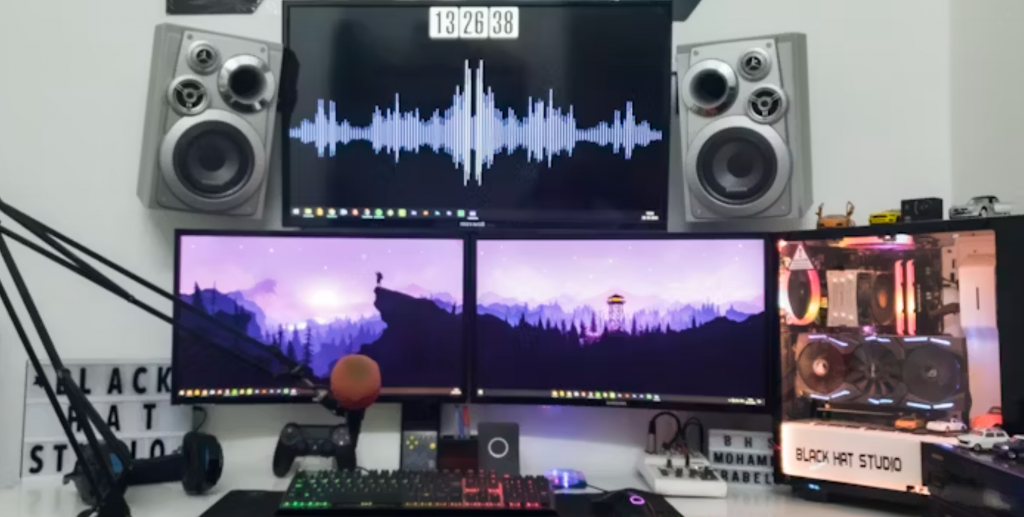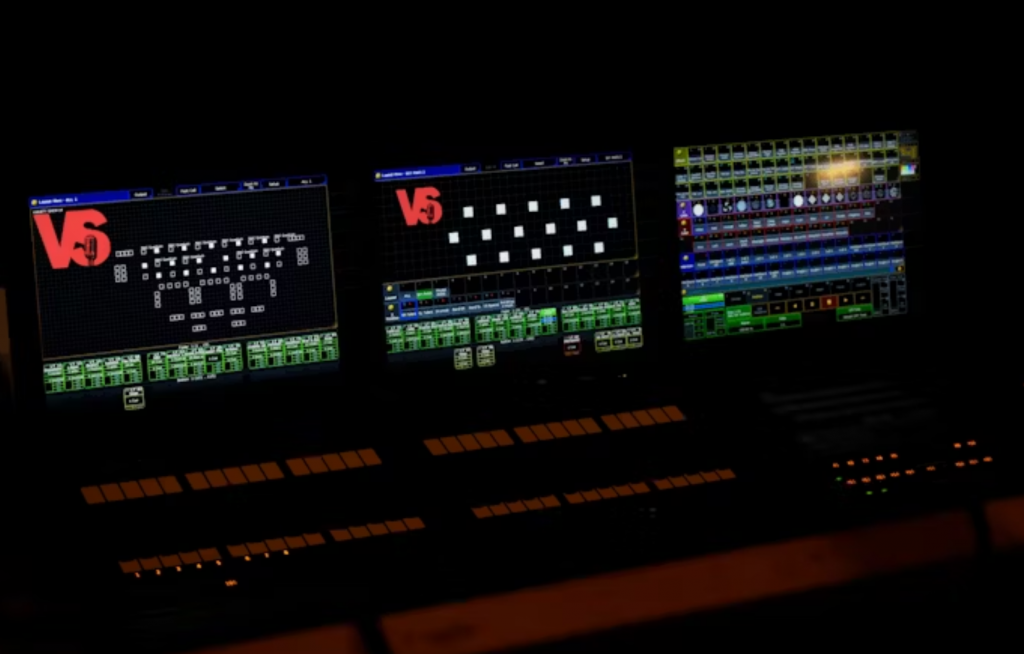Introduction
When it comes to studio monitors, few brands are as recognized as Yamaha. Known for their precision, clarity, and durability, Yamaha’s studio monitors have become a staple for professionals and home studio enthusiasts alike. But with so many options available, you may be wondering: Are the Yamaha HS8 studio monitors worth the hype? Let’s dive into this review and find out.
What Are Studio Monitors?
Before we get into the specifics of the Yamaha HS8, it’s important to understand what studio monitors are and why they matter. Unlike regular speakers, studio monitors are designed to provide a flat, uncolored sound. This allows music producers, sound engineers, and audiophiles to hear the most accurate representation of their audio, making them crucial for mixing and mastering.
Overview of Yamaha HS8
The Yamaha HS8 is one of the most popular 8-inch studio monitors from the HS series. Known for its pristine sound quality and neutral frequency response, it is commonly used in professional studios around the world. Let’s take a closer look at the key aspects that make the HS8 a go-to choice for many audio professionals.
Design and Build Quality
One of the first things you notice about the Yamaha HS8 is its minimalistic design. The white-coned, black enclosure gives it a professional yet sleek look. The monitor is built with high-quality materials, ensuring durability. The body is sturdy, and while it’s not overly heavy, it feels solid. The rear-ported design helps to enhance bass response, which is a nice feature for any monitor in this price range.
Key Features of Yamaha HS8
The Yamaha HS8 comes with several features that make it a standout option for anyone serious about audio production. Some of the highlights include:
- Power Output: 120 watts, delivering enough power for clear and loud sound without distortion.
- Bi-Amp Design: Separates the low and high frequencies, allowing each driver to perform optimally.
- Room Control and High Trim: Adjustable settings to optimize sound in various room environments.
Driver and Frequency Response
The Yamaha HS8 comes equipped with an 8-inch woofer and a 1-inch tweeter. This combination allows it to cover a wide frequency range of 38Hz to 30kHz. The bass response is robust, the midrange is clear, and the high frequencies are crisp without being harsh.
Amp and Connectivity Options
On the back of the HS8, you’ll find balanced XLR and TRS inputs, making it compatible with a variety of audio interfaces and mixers. The rear amplifier is designed to provide enough power to drive the speakers while maintaining clarity, even at higher volumes.
Sound Performance: Breaking Down the Audio Quality
The sound quality of the Yamaha HS8 is often what sets it apart from its competitors. Let’s break down the audio performance based on various frequency ranges.
Highs, Mids, and Lows
The HS8 does an excellent job of handling all ranges of sound. The highs are clear and accurate, the mids are rich and natural, and the lows are solid without being overpowering. Whether you’re working on a bass-heavy track or a vocal-centered mix, the HS8 delivers with precision.
Accuracy and Clarity
One of the most important aspects of studio monitors is accuracy. The Yamaha HS8 provides a flat response, meaning it doesn’t boost any frequencies, allowing you to hear the raw sound of your mix. This helps producers and engineers to make decisions based on what they actually hear, ensuring their final product translates well on all systems.
Distortion and Soundstage
The HS8 is impressively free of distortion even at high volumes. The separation between the different elements of a track is noticeable, making it easier to focus on specific parts of your mix. The soundstage is also wide, giving the impression of an open and airy environment—ideal for mixing and mastering.
Comparing Yamaha HS8 to Other Monitors
How does the Yamaha HS8 stack up against its competitors? Let’s compare it to two other popular studio monitors: the KRK Rokit 8 and JBL 305P MkII.
HS8 vs. KRK Rokit 8
The KRK Rokit 8 is known for its pronounced bass response, which may appeal to genres like EDM or hip-hop. However, the Yamaha HS8 provides a more neutral sound, which many professionals prefer for mixing and mastering. The Rokit 8 may be a bit more forgiving when it comes to bass-heavy tracks, but the HS8 offers better clarity and a flatter response overall.
HS8 vs. JBL 305P MkII
The JBL 305P MkII offers great value for the price and provides a more detailed high end than the HS8. However, the HS8 excels in the midrange, delivering a more balanced sound overall. If you’re looking for a neutral, well-rounded sound, the HS8 might be the better choice.

Practical Applications
The Yamaha HS8 shines in a variety of settings. Whether you’re producing music, designing sound for film, or mixing live audio, these monitors offer the accuracy and clarity needed to make informed decisions.
For Music Producers
Producers who focus on precise mixes will find the Yamaha HS8 invaluable. The flat response allows them to hear their mixes exactly as they are, which is essential when fine-tuning every element of a track.
For Home Studios
If you have a home studio, the Yamaha HS8 is a fantastic option. Its solid performance, durable build, and reasonable price make it an excellent choice for anyone serious about home recording.
For Sound Engineers
Sound engineers benefit from the detailed soundstage and accuracy of the HS8, which helps them make better decisions when mixing and mastering projects.

Are Yamaha HS8 Studio Monitors Worth the Price?
At around $300 per speaker, the Yamaha HS8 is not the cheapest option out there. However, given its high-quality build, accurate sound, and reliable performance, it offers great value for money.
Value for Money
When you compare the price to the performance, the HS8 provides excellent value. It’s a solid investment for anyone who needs a reliable monitor that offers precision and clarity.
Pros and Cons
Pros:
- Accurate and flat sound response
- Solid bass without distortion
- Durable build quality
- Great value for money
Cons:
- Can be too flat for some listeners who prefer a “colored” sound
- Bass might not satisfy those who work with bass-heavy genres
Conclusion
The Yamaha HS8 studio monitors are a fantastic choice for professionals and home studio owners who prioritize accuracy and clarity in their audio. They are not designed to “wow” you with exaggerated bass or highs, but rather to deliver an honest and flat sound, allowing you to make the best possible mixing decisions. While they might not be for everyone, if you’re serious about your audio production, the Yamaha HS8 is definitely worth considering.
FAQs
- Are the Yamaha HS8 good for bass-heavy genres? While the HS8 offers solid bass, it is designed to be neutral and balanced, so it may not be as pronounced as some other monitors designed specifically for bass-heavy genres.
- How does the Yamaha HS8 compare to the HS5? The HS8 offers a larger driver and extended bass response compared to the HS5, making it a better option for larger studios or for those needing more low-end clarity.
- Can I use the Yamaha HS8 for home studio recording? Yes, the HS8 is a great choice for home studios due to its balance of price, performance, and accuracy.
- Do I need a subwoofer with the Yamaha HS8? It depends on your specific needs. The HS8 provides solid bass, but if you require more low-end extension, adding a subwoofer can enhance your listening experience.
- Are the Yamaha HS8 good for mixing and mastering? Absolutely! The flat response and clarity of the HS8 make it ideal for mixing and mastering, as it provides an accurate representation of your audio.


Leave a Reply